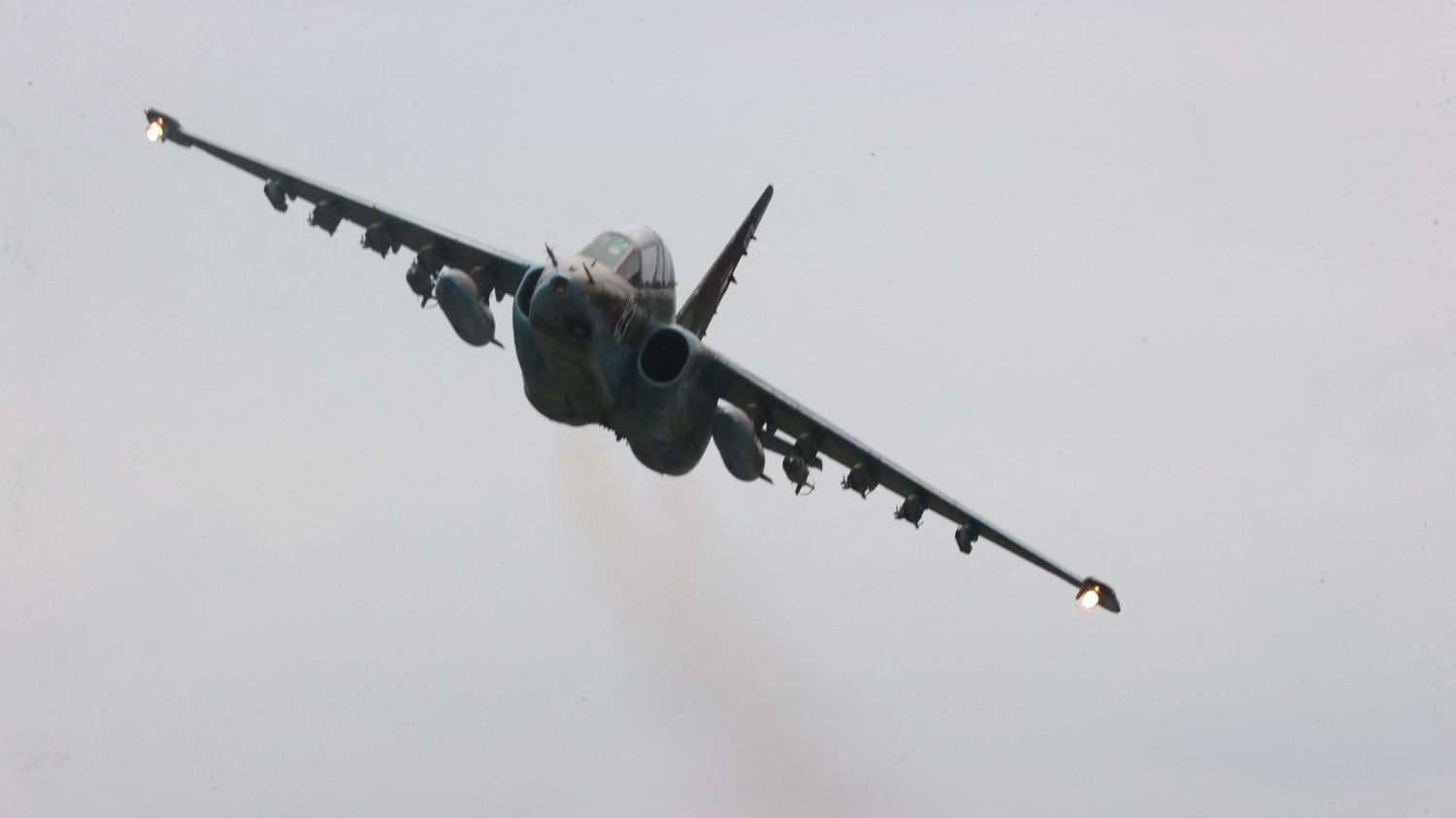Moscow will station nuclear weapons on the territory of its Belarusian ally. A measure presented as a response to the delivery of depleted uranium munitions, promised by London to Ukraine.
Vladimir Putin once again raises the scarecrow of nuclear weapon in the context of the Ukrainian conflict. During an interview on Russian television broadcast on Saturday March 25, the Head of State announced the deployment of tactical nuclear weapons in Belarus. “There is nothing unusual here: the United States has been doing this for decades. It has long deployed its tactical nuclear weapons on the territory of its allies”justified the Russian leader, adding that he had Minsk’s agreement for this operation. “From April 3, we begin to train the crews. And on July 1, we will complete the construction of a special warehouse for tactical nuclear weapons on the territory of Belarus”detailed Vladimir Putin.
>> Follow the news of the war in Ukraine live with franceinfo
The Russian president presents this decision as a response to the shipment of depleted uranium munitions to Ukraine by Londonmentioned by the British Deputy Minister of Defense March 20th. What weapons are we talking about exactly? What will be the consequences of their deployment? Franceinfo returns to this subject in three questions.
1 What is a tactical nuclear weapon?
If the distinction seems a little artificial for the specialists, one opposes the so-called strategic nuclear weapons, designed for the destruction of objectives using in particular ballistic missiles, with the tactical nuclear weapons. Their use is theoretically limited to the battlefield. A tactical nuclear weapon is thus a nuclear bomb of “reduced” power, used for example to target units of the opposing army, such as a column of tanks.
In Belarus, it can be assumed that “‘small’ weapons with a power of about 10 to 50 kilotons will equip Belarusian Sukhoi bombers“, advances to franceinfo Stéphane Audrand, consultant specializing in armaments. It is therefore a question of a relative weakness: for comparison, the atomic bomb dropped on Hiroshima in 1945 had a power of approximately 16 kilotons.
2 Why does Russia want to deploy these nuclear weapons in Belarus?
Vladimir Putin presents the deployment of nuclear weapons in Belarus as a response to the British announcements of March 20 concerning deliveries of depleted uranium munitions to Ukraine. In fact, this decision seems to have already been prepared almost nine months ago. “In the next few months, we will transfer (…) Iskander-M tactical missile systems, which can use ballistic or cruise missiles, in their conventional and nuclear versions”, announced the Russian president on June 25, 2022, after a meeting with his Belarusian counterpart Alexander Lukashenko. “[Vladimir] Putin also said he would modify Belarusian attack aircraft to be capable of carrying tactical nuclear weapons. recalls Stéphane Audrand.
The stationing of nuclear weapons in Belarus is fortunately not necessarily synonymous with their forthcoming use. “The hypotheses of employment of nuclear weapons remain very improbable, and their deployment does not in fact change much in the world situation”, believes the arms specialist. On the other hand, the delivery of these weapons is the sign of a strengthened alliance between Minsk and Moscow. “The sharing of nuclear weapons is the greatest proof of trust that can exist between two countries.points out Stéphane Audrand. Moscow will remain the sole owner and decision maker of the use of these weapons”he points out, however.
For Ukraine, the presence of Russian nuclear weapons in Belarus is proof that “the Kremlin took [le pays] as a nuclear hostage”wrote on Twitter March 26 Ukrainian Security Council Secretary Oleksiy Danilov, adding that this decision was a “step towards internal destabilization” from Belarus.
3 What are the depleted uranium munitions, the delivery of which to Ukraine is denounced by Moscow?
In her address to the House of Lords on Monday, British Deputy Defense Minister Annabel Goldie said the UK would supply depleted uranium shells to Ukraine. This ammunition is known to be particularly effective against armored vehicles. “Depleted uranium is a by-product of the enrichment of nuclear fuel used for nuclear power plants, explains Stéphane Audrand. It is an extremely dense metal, with which we produce penetrators for shells against tanks.”
“Depleted uranium is very slightly radioactive, less than the natural uranium found naturally in the floor”, continues the specialist. Like other conventional munitions that disperse heavy metals, “his employment does not engender only chemical pollution, not radioactive”emphasizes Stéphane Audrand.
However, the radiological toxicity of depleted uranium munitions is subject to debate. Numerous studies have concluded that there is no evidence establishing its harmfulness, but these results remain disputed. Indeed, depleted uranium shells generate, when they hit their target, uranium dust and metal fragments. According to studies with which the International Atomic Energy Agency has been associated, “the radiological risk to which the populations and the environment were exposed was not, however, significant in cases where the presence of depleted uranium had caused localized contamination of the environment in the form of small particles released at the time of the impact. .”
On the other hand, warns the United Nations, “When fragments of depleted uranium munitions or complete munitions of this type are discovered, persons who come into direct contact with these objects could suffer the effects of the radiation”. “Munitions containing depleted uranium are absolutely not considered nuclear weapons”, however, wishes to point out the specialist. For Stéphane Audrand, justifying the deployment of nuclear weapons by the delivery of depleted uranium ammunition, as Moscow is doing, is a matter of “propaganda”. “These weapons have nothing in common or equivalent”he insists.
